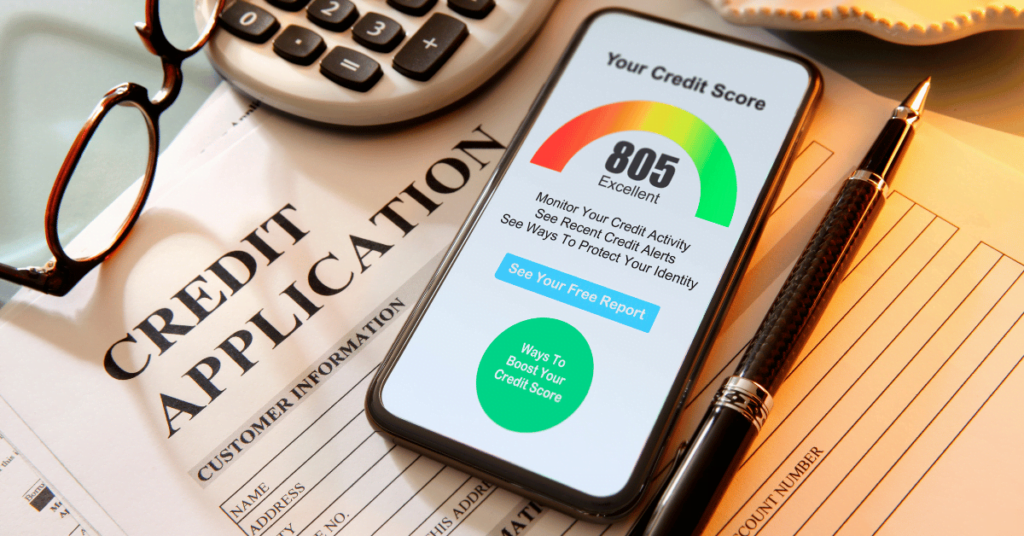
When taking out a loan, one of the most critical aspects to consider is calculating the loan interest rate. Interest rate is the percentage charged on the principal amount of a loan, and it is what the lender earns as profit.
Understanding how interest rates are calculated is crucial in ensuring you can afford the loan repayments and avoid falling into debt. This blog will explore how loan interest rates are calculated in South Africa and the factors that influence the rates.
» Figure Out Your Payments: Try Arcadia Finance’s Personal Loan Calculator
Factors That Affect Loan Interest Rates
Several factors affect the interest rate charged on a loan. The following are some of the most critical factors in South Africa:
- Credit score and credit history:
A borrower’s credit score and credit history play a significant role in determining the interest rate charged on a loan. Lenders use a credit score to assess a borrower’s creditworthiness, and the higher the credit score, the lower the interest rate charged.
- Type of loan:
Different types of loans have varying interest rates. For example, a personal loan usually has a higher interest rate than a secured loan, such as a mortgage. The reason for this is that secured loans have collateral that the lender can sell to recover their money in case the borrower defaults.
- Loan amount and loan term:
The loan amount and the loan term also affect the interest rate charged. Generally, the higher the loan amount and the longer the loan term, the higher the interest rate.

- Economic conditions and inflation:
Economic conditions and inflation also affect loan interest rates. If the economy is performing poorly, the interest rates are likely to be high. Conversely, if the economy is doing well, the interest rates are likely to be lower.
- Competition in the lending market:
Competition in the lending market also affects loan interest rates. When there is more competition, lenders tend to reduce their interest rates to attract more borrowers.
- Lender’s risk assessment:
Lenders also consider the risk of lending to a borrower when determining the interest rate. If a lender considers a borrower to be high risk, they may charge a higher interest rate to mitigate the risk.
» Read more: Learn Everything You Need to Know About Credit
Types of Loan Interest Rates
In South Africa, there are various types of loan interest rates. The following are the most common types:
- Fixed interest rates: A fixed interest rate is an interest rate that remains the same throughout the loan term. This means that the borrower knows exactly how much they need to repay each month.
- Variable interest rates: A variable interest rate is an interest rate that can change throughout the loan term. The interest rate is usually linked to a benchmark rate, such as the prime interest rate. If the benchmark rate changes, the interest rate on the loan changes as well.
- Prime interest rates: The prime interest rate is the interest rate charged by commercial banks to their most creditworthy customers. This rate serves as a benchmark for other interest rates, such as variable interest rates.
- Compound interest rates: Compound interest is interest that is calculated on the principal amount and the accumulated interest. This means that the interest grows over time, and the borrower ends up paying more interest than they would with a simple interest rate.
Calculating the interest rate on your loan can seem daunting, but understanding this aspect is vital to managing your finances. Our guide on how interest rates impact your loan offers essential tips and tools to help you accurately determine the costs associated with your loan.
Calculation of Loan Interest Rates in South Africa
South Africa’s Lending Market
The lending market in South Africa is well-developed and regulated. There are various financial institutions that offer loans to individuals and businesses, including banks, credit unions, and microlenders. The interest rates charged on loans in South Africa are generally higher than in developed countries, mainly due to the higher risk associated with lending in South Africa.
» Find a Short-term Loan that Works for You. With Our Loan Calculator
Calculation of Interest Rates for Different Types of Loans
The calculation of interest rates for different types of loans in South Africa varies. For example, the interest rate charged on a personal loan is usually higher than the interest rate charged on a home loan. This is because personal loans are unsecured, which means that there is no collateral to back up the loan. On the other hand, home loans are secured by the property being financed, which reduces the risk for the lender.
A loan’s interest rate is calculated as a percentage of the principal amount. Interest is usually charged monthly, and the interest rate is stated as an annual percentage rate (APR). The interest rate charged on a loan is influenced by various factors, such as the borrower’s credit score, loan amount, loan term, and the lender’s risk assessment.

Role of the South African Reserve Bank in Setting Interest Rates
The South African Reserve Bank (SARB) is responsible for setting the country’s benchmark interest rate, known as the repo rate. The repo rate is the rate at which the SARB lends money to commercial banks. The repo rate serves as a benchmark for other interest rates, such as the prime interest rate, which is the interest rate charged by commercial banks to their most creditworthy customers. Lenders use the prime interest rate as a reference rate to determine the interest rate on loans.
The SARB uses the repo rate as a tool to control inflation and stimulate economic growth. When inflation is high, the SARB may increase the repo rate to reduce the demand for credit and slow down inflation. Conversely, when the economy is in a downturn, the SARB may reduce the repo rate to stimulate borrowing and investment and boost economic growth.
Examples of Loan Interest Rate Calculations
Let’s look at some examples of loan interest rate calculations in South Africa. Suppose you want to take out a personal loan of R50,000 over a term of 3 years. If your credit score is good, the lender may offer you an interest rate of 15% per annum. The interest on the loan would be calculated as follows:
Interest Calculation Formula: R50,000 x 0.15 x (3/12)
Interest = R1,875 per month
Now, let’s consider a home loan of R1,000,000 over a term of 20 years. Suppose the interest rate charged is 10% per annum. The interest on the loan would be calculated as follows:
Interest Calculation Formula: R1,000,000 x 0.10 x (20/12)
Interest = R16,667 per month

Impact of Loan Interest Rates on Borrowers
The interest rate on a loan can have a significant impact on a borrower’s financial situation. The following are some of the impacts of loan interest rates on borrowers:
Affordability and budgeting
The interest rate charged on a loan affects the borrower’s affordability and budgeting. A high interest rate means higher loan repayments, which can be difficult to manage, particularly for borrowers with low incomes.
Debt repayment and interest costs
A high interest rate also means that a borrower will pay more interest over the loan term. This means that it will take longer to repay the loan, and the borrower will end up paying more interest than the principal amount.
Effect on credit score and credit history
The interest rate charged on a loan also affects the borrower’s credit score and credit history. If a borrower misses loan repayments due to a high interest rate, their credit score may be negatively affected. A poor credit score can make it difficult to access credit in the future.
» Bad Credit Score? Learn How to Improve Your Credit Score with Our Tips
Impact on the overall economy
Loan interest rates also have an impact on the overall economy. High-interest rates can lead to reduced borrowing and investment, which can slow down economic growth. Conversely, lower interest rates can stimulate borrowing and investment, leading to economic growth.
About Arcadia Finance
Make your loan journey easier and more efficient with Arcadia Finance. Submit a complimentary application to receive offers from 19 lenders. Trust in our assurance that all our lending partners operate within the regulations of the National Credit Regulator of South Africa.
Conclusion
Loan interest rates are a crucial aspect of borrowing that borrowers need to understand. In South Africa, the interest rate charged on a loan is determined by various factors, including credit score, loan amount, loan term, economic conditions, and lender’s risk assessment.
There are also different types of interest rates, such as fixed and variable interest rates. Understanding how loan interest rates are calculated is crucial to ensure that borrowers can afford the loan repayments and avoid falling into debt.
FAQ
The interest rate charged on a loan in South Africa is influenced by various factors, such as the borrower’s credit score, loan amount, loan term, type of loan, and the lender’s risk assessment. Economic conditions and competition in the lending market also affect interest rates.
The interest rate on a loan is calculated as a percentage of the principal amount. Interest is usually charged monthly, and the interest rate is stated as an annual percentage rate (APR). The interest rate is influenced by various factors, such as the borrower’s credit score, loan amount, loan term, type of loan, and the lender’s risk assessment.
The South African Reserve Bank (SARB) is responsible for setting the country’s benchmark interest rate, known as the repo rate. The repo rate serves as a benchmark for other interest rates, such as the prime interest rate, which is the interest rate charged by commercial banks to their most creditworthy customers.
The most common types of loan interest rates in South Africa are fixed interest rates, variable interest rates, prime interest rates, and compound interest rates. Fixed interest rates remain the same throughout the loan term, while variable interest rates can change throughout the loan term. Prime interest rates serve as a benchmark for other interest rates. Compound interest rates are interest rates calculated on the principal amount and the accumulated interest.


